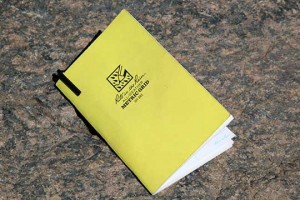Technical Writing
Dr. Rubén G. Mendoza, PhD
Description: This lab exercise provides an overview of those technical writing and record keeping skills necessary for the effective documentation of archaeological materials, contexts, and processes. Your instructor will first review the basic dimensions of effective technical writing, and will then provide your respective group with a number of objects or artifacts that you will be put to the task of describing in technical detail. Having walked through the process of identifying effective “descriptors” for the objects under study, you will then each create a technical description that contains all of the basic variables or diagnostics of description and record keeping deemed important to archaeological descriptions. You should subsequently enter your technical descriptions into the iLearn Forum provided for that purpose.
Principles of Technical Writing:
(a) establish an appropriate writer’s role, (b) determine a specific reader and or audience target, (c) determine the specific purpose of the narrative, (d) determine the specific situation or context for the narrative, (e) organize effectively, (f) be as concise as possible as per the above principles, (g) use simple, concrete, and familiar language and terminology, and (h) present a neat and appealing final product. Principles adapted after John F. Birk, 1981.
Part 1: Types of Definitions:
Informal: Parenthetical synonyms, a phrase set off by commas, a simple sentence, and working definitions. Formal: Institutionalized, contextual, negation, cause/effect, exemplification, purpose/function, physical description, procedural, etymological, and comparison.
Functional Analysis: The attached table provides a “functional analysis,” “formula,” or template for the one sentence description or formal definition. Each of the following forms of definition should be used to define the object or phenomenon under consideration using the attached template or formula:
- Brief Formal Definition: Select a term from the field of archaeology, and define said term within a single sentence as per the principles noted above (e.g., arrowhead = flaked stone projectile point hafted to a wooden shaft and propelled by way of a flex bow or the thrusting of a hand-held spear shaft).
- Formal Amplified Definition: Expand the definition for the same term into a formal amplified definition of approximately 100 words or so.
Part 2: Types of Descriptions: Select at least one or two of the following types of descriptive formats and create a description that exemplifies the type or form in question. For example, you might use the scientific method in archaeology to describe in as concrete, precise, efficient and organized a fashion as possible, the processes or procedures required of the task or process that you have in mind.
- Process Descriptions: What is being accomplished, family name of process, chronological list of phases, conditions (who, what, where, when, why), materials and tools required of procedure, special warnings and precautions.
- Description of Mechanism (in operation): Statement of the function, contributions of main parts to whole mechanism or function, role of subparts to whole mechanism or function.
- Technical Instructions: Summary of process or function, steps, materials, tools, warnings and precautions, notes, and repetition of steps where necessary.
- Formal Definition: See above.
- Classification and Division: Classification moves up the abstraction ladder…it is inductive or specific to general. Division moves down the ladder (use abstraction ladder).


